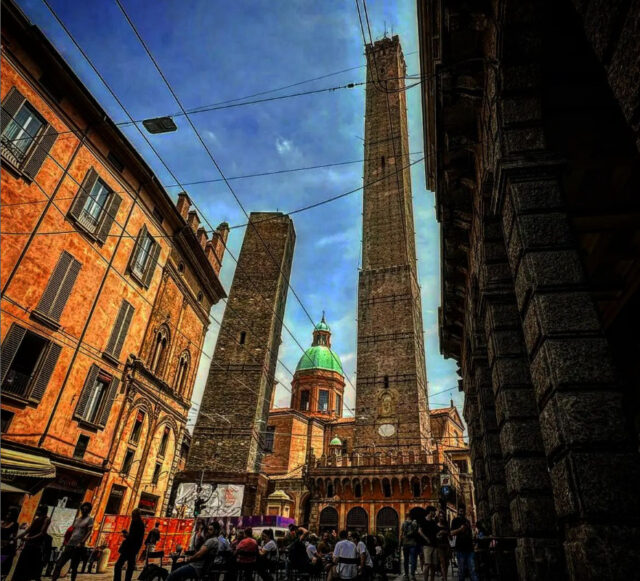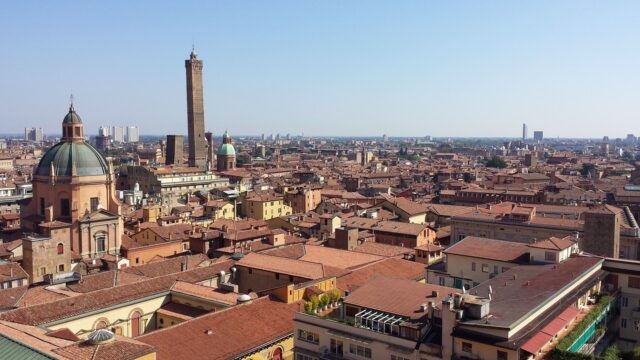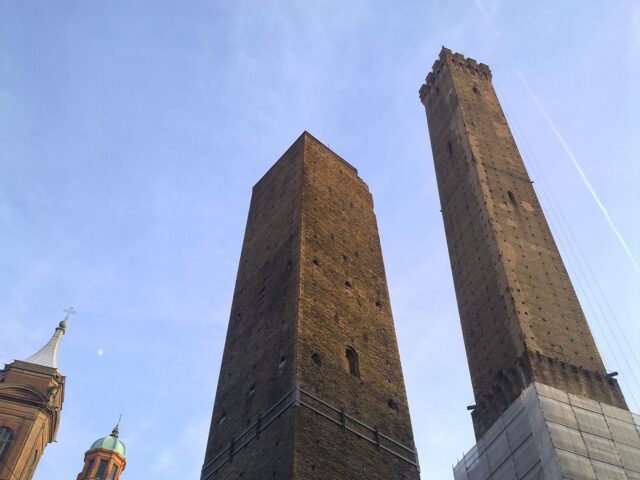Le due Torri
Le due Torri, the Two Towers of Bologna (namely the Torre degli Asinelli and the Torre Garisenda ) are unanimously considered the symbol of the city of Bologna.
These are two imposing medieval towers, both leaning, located in the historic center, just a five-minute walk from Piazza Maggiore.
They are only the two most famous of the more than twenty medieval towers still visible in the city.
In the Middle Ages, there were even more than a hundred towers of this type – so much so that Bologna was also known as “ la Turrita ” – and they had both a military and a noble function (that is, they served to give the families who built them a coat of arms).


Asinelli Tower. This tower was built in the 12th century – between 1109 and 1119 – by the Asinelli family and as early as the 13th century it became the property of the Municipality of Bologna. It is 97.2 meters high and has a slope of 1.3°.
The Torre degli Asinelli is currently the only one of the Two Towers that can be visited. Thanks to its internal staircase, completed in 1684 and composed of 498 steps, it is possible to climb to the top and enjoy an incredible panoramic view of the city. It was thought several times to also equip it with an elevator but the project has always remained on paper.
The Garisenda Tower was built in the same period. It is 47 meters high, therefore about half of the Torre degli Asinelli, but has a decidedly greater slope ( 4°, more than the Tower of Pisa) which has made it one of the most famous leaning towers in the world.


It seems that it has hung in this way since its construction, or at least since the thirteenth century, due to the subsidence of the ground and the foundations. It was initially about 20 meters taller. It was cut off in the mid-14th century for fear of possible collapse.
Its steep slope immediately made it famous, so much so that Dante Alighieri, for example, wrote about it twice, first in the Sonnet on the Garisenda (1287) and then in the most famous verses of Canto XXXI of the Inferno:
As it seems to look at Carisenda
under the bowed corner, when a cloud goes
over her so that she hangs towards him;
such did Antaeus seem to me, who stood at bay
to see him stoop, and it was at such an hour
that I would have liked to have gone by another road.
(Translation from the website www.museidibologna.it)

